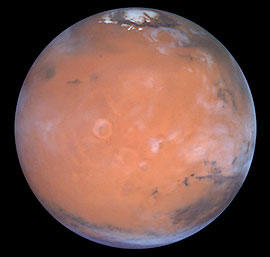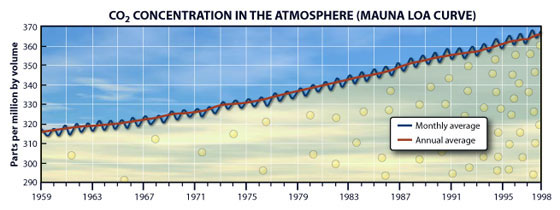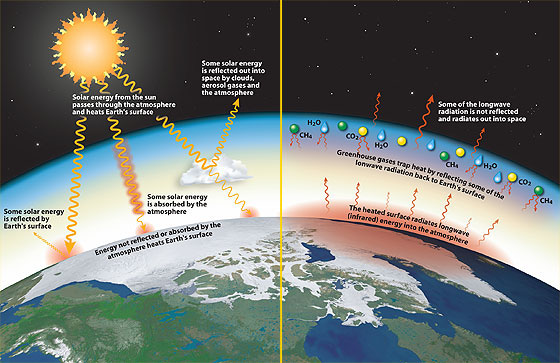Greenhouse Gases: Too Much of a Good Thing
Human activity increases the amount of greenhouse gases in the atmosphere—mainly carbon dioxide from the burning of fossil fuels (coal, oil, and natural gas). The extra greenhouse gas may be trapping too much heat, abnormally raising Earth’s temperatures.
Although Earth’s average temperature fluctuates naturally, the current rapid rise in temperatures—global warming—is potentially harmful to life on Earth. The summer of 2003 was the hottest since 1500 and was responsible for 11,000 deaths in France alone. The National Science Foundation predicts that at the current rate of production of greenhouse gases, killer heat waves will be longer and more frequent.

- This One’s Too Cold
- The surface temperature of Mars is -63° C (-81° F). Even though the atmosphere is 95 percent carbon dioxide, it’s only one percent as dense as Earth’s atmosphere, and there’s far too little carbon dioxide to keep Mars warm. Trace amounts of methane recently found on Mars could have come from volcanoes or living organisms.
- Photo © Hubble Space Telescope, Space Telescope Science Institute

- This One's Too Hot
- The surface temperature of Venus is 496° C (873° F). Its atmosphere is 96 percent carbon dioxide—a huge greenhouse effect.
- Photo Chip Clark © Smithsonian Institution

- Going Up
- A steady rise in the concentration of carbon dioxide in the atmosphere has been measured atop the Mauna Loa volcano in Hawaii since 1958. Since the Industrial Revolution began, the amount of carbon dioxide in the atmosphere has increased by 31 percent. That’s higher than at any time in the past 100 million years.

